Respiratory Conditions
How to submit an article:
- Registered users can submit any published journal article that has a unique DOI (Digital Object Identifier) name or link to Research Hub.
- For example, you can paste the full DOI link:
https://doi.org/10.1109/5.771073or just the DOI name:10.1109/5.771073into the field above and click submit. - The person who is first to submit a valid article to Research Hub will forever be credited for it, and every article submission earns you +6 Research Points.
Sub-Topics:
Related Topics
Published research studies are articles that present the findings of original research that has undergone a peer-review process and has been made publicly available in scholarly journals, books or other media.

Effectiveness and safety of Qingfei Dayuan granules for treating influenza and upper respiratory tract infections manifested by the pulmonary heat-toxin syndrome: A multicenter, randomized, double-blind, placebo-controlled trial
2023 Mar 15 Frontiers in Pharmacology Li W, Xie L, Zhu X, Yang Y, Wang L, Yang M, et al.
The trial showed that QFDY was an effective and safe treatment modality for influenza and URTIs manifested by PHTS because it shortened the complete fever relief time, accelerated clinical recovery, and alleviated symptoms such as cough, a stuffy and running nose, and sneezing during the course of treatment.
Randomised Controlled Trial Qingfei Dayuan Granules Influenza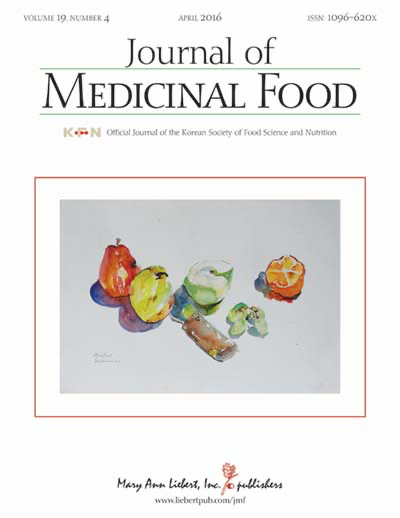
Effects of Pear Extracts on Microbiome and Immunocytokines to Alleviate Air Pollution-Related Respiratory Hypersensitivity
2023 Mar 01 Journal of Medicinal Food Yang M, Lee U, Cho HR, Lee KB, Shin YJ, Bae MJ, et al.
Randomised Controlled Trial Air Pollution Asthma Gut Microbiota PearKorean pear extracts appear to alleviate air pollution-related respiratory hypersensitivity by modulating beneficial gut microflora and suppressing pro-inflammatory cytokines.
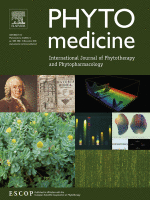
Xuanfei Baidu Decoction suppresses complement overactivation and ameliorates IgG immune complex-induced acute lung injury by inhibiting JAK2/STAT3/SOCS3 and NF-κB signaling pathway
2023 Jan Phytomedicine Li C, Li Y, Zhang H, Zhuo Y, Zhang L, Yang L, et al.
Xuanfei Baidu Decoction (XFBD) suppressed complement overactivation and ameliorated IgG immune complex-induced acute lung injury by inhibiting JAK2/STAT3/SOCS3 and NF-κB signaling pathway. These data contribute to understanding the mechanisms of XFBD in COVID-19 treatment.
Network Pharmacology Xuan Fei Bai Du decoction COVID-19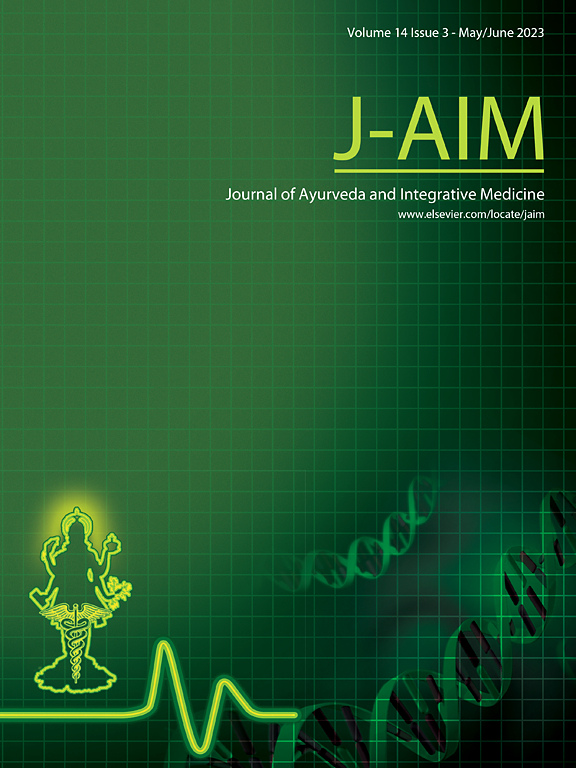
“An integrative approach with Ayurveda and Traditional Chinese Acupuncture in post covid parosmia – A case study”
2023 Jan Journal of Ayurveda and Integrative Medicine Bhat AK, Krishna Kumar V, Johnson JD
Parosmia was assessed by VAS which was ten on day one and zero on day seven. We could achieve complete normalcy in olfactory function within four months of this treatment. This integrative approach was found to be safe and effective in treating Post covid parosmia.
Case Report Acupuncture Ayurveda COVID-19
Does pomegranate extract supplementation improve the clinical symptoms of patients with allergic asthma? A double-blind, randomized, placebo-controlled trial
2023 Jan 25 Frontiers in Pharmacology Hosseini SA, Shateri Z, Abolnezhadian F, Maraghi E, Haddadzadeh Shoushtari M, Zilaee M
Randomised Controlled Trial AsthmaPomegranate extract supplements can help improve clinical symptoms and lower blood cell counts associated with inflammation in patients with allergic asthma.
Research insights are moderated by the Research Hub team and offer an at-a-glance overview of interesting research findings.

2023 Journal of Medicinal Food
Korean pear extracts appear to alleviate air pollution-related respiratory hypersensitivity by modulating beneficial gut microflora and suppressing pro-inflammatory cytokines.
Randomised Controlled Trial Air Pollution Asthma Gut Microbiota Pear
Effects of Pear Extracts on Microbiome and Immunocytokines to Alleviate Air Pollution-Related Respiratory Hypersensitivity
Yang M, Lee U, Cho HR, Lee KB, Shin YJ, Bae MJ, et al.

2023 Frontiers in Pharmacology
Pomegranate extract supplements can help improve clinical symptoms and lower blood cell counts associated with inflammation in patients with allergic asthma.
Randomised Controlled Trial Asthma
Does pomegranate extract supplementation improve the clinical symptoms of patients with allergic asthma? A double-blind, randomized, placebo-controlled trial
Hosseini SA, Shateri Z, Abolnezhadian F, Maraghi E, Haddadzadeh Shoushtari M, Zilaee M
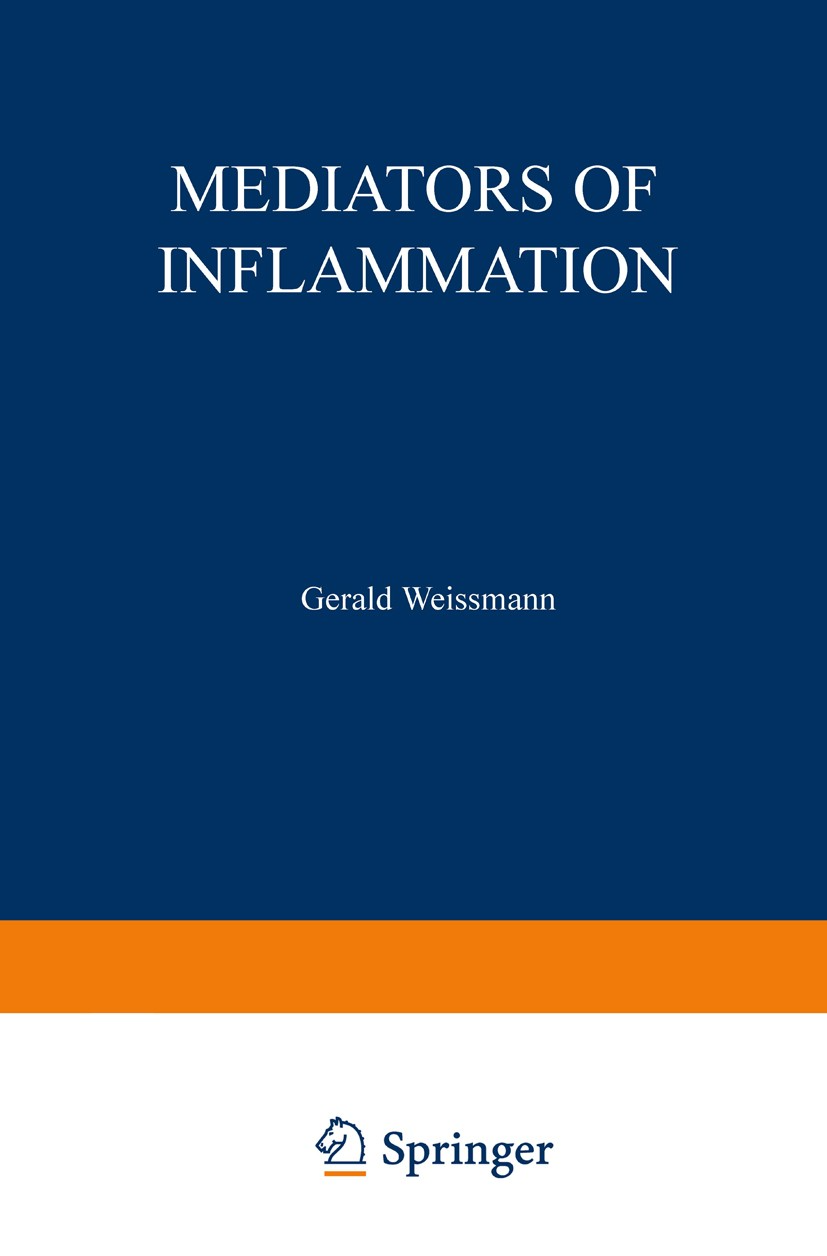
2022 Mediators of Inflammation
Drinking pomegranate juice and sumac can help reduce symptoms in outpatients diagnosed with COVID-19, alongside standard treatment.
Randomised Controlled Trial COVID-19 Pomegranate Sumac
The Effect of Pomegranate Juice and Sumac Consumption in the Treatment of Outpatients with COVID-19
Forouzanfar F, Ahmadpoor M, Farahi MM, Hadianfar A, Sahebkar A, Esmaily H, et al.

2022 Evidence-Based Complementary and Alternative Medicine
HuoXiang ZhengQi (HQXXD) may be a safe and effective treatment for Chronic Cough Variant Asthma (CVA), improving clinical efficacy and airway responsiveness while reducing recurrence rates.
Systematic Review Asthma Cough Huang Qi Huangqi Xixin decoction Xi Xin
The Effectiveness and Safety of Huangqi Xixin Decoction for Cough Variant Asthma: A Systematic Review and Meta-Analysis
Wang C, Xia Q, Hu B, Jiang W, Zhang H
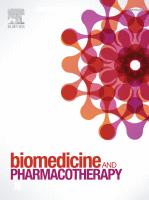
2022 Biomedicine & Pharmacotherapy
Pomegranate extract and its phytochemicals can potentially inhibit severe acute respiratory syndrome coronavirus 2 (SARS-COV-2) and improve gut microbiota, preventing obesity and diabetes.
Review Article COVID-19 Gut Microbiota Obesity Pomegranate Type 2 Diabetes
Medicinal uses, pharmacological activities, phytochemistry, and the molecular mechanisms of Punica granatum L. (pomegranate) plant extracts: A review
Maphetu N, Unuofin JO, Masuku NP, Olisah C, Lebelo SL
Review Articles
Review articles summarise and critically evaluate the current state of research on a specific topic or field by synthesising multiple primary research studies.

The potential for traditional Chinese therapy in treating sleep disorders caused by COVID-19 through the cholinergic anti-inflammatory pathway
2022 Oct 10 Frontiers in Pharmacology Xie X, Zhang N, Fu J, Wang Z, Ye Z, Liu Z
The reasons for the sleep disorders caused by the novel coronavirus and found that inflammation was the main reason leading to sleep distress in patients. And we reviewed the mechanisms of three common traditional Chinese in inhibiting inflammation through CAP and relieving the sleep or symptoms. We, therefore, propose that TCT may be a potential strategy to take for the treatment of sleep problems due to inflammation caused by COVID-19.
Review Article COVID-19
The Effectiveness and Safety of Huangqi Xixin Decoction for Cough Variant Asthma: A Systematic Review and Meta-Analysis
2022 Sep 20 Evidence-Based Complementary and Alternative Medicine Wang C, Xia Q, Hu B, Jiang W, Zhang H
Systematic Review Meta-Analysis Cough Asthma Huangqi Xixin decoction Huang Qi Xi XinHuoXiang ZhengQi (HQXXD) may be a safe and effective treatment for Chronic Cough Variant Asthma (CVA), improving clinical efficacy and airway responsiveness while reducing recurrence rates.

Medicinal uses, pharmacological activities, phytochemistry, and the molecular mechanisms of Punica granatum L. (pomegranate) plant extracts: A review
2022 Sep Biomedicine & Pharmacotherapy Maphetu N, Unuofin JO, Masuku NP, Olisah C, Lebelo SL
Review Article Gut Microbiota Type 2 Diabetes Obesity Pomegranate COVID-19Pomegranate extract and its phytochemicals can potentially inhibit severe acute respiratory syndrome coronavirus 2 (SARS-COV-2) and improve gut microbiota, preventing obesity and diabetes.

Exploring the Relationship between Allergic Rhinitis and Constitution Based on the “Traditional Chinese Medicine Constitution Theory”
2022 Aug 24 Evidence-Based Complementary and Alternative Medicine Zhang Y, Fu J, Zhou Z, Zhang Y, Chen Y, Song A
Traditional Chinese Medicine (TCM) constitution plays an intrinsic role in allergic rhinitis (AR) pathogenesis. Additionally, treating AR by intervening and adjusting the constitution of TCM is beneficial and worthy of clinical application.
Review Article Hay Fever
Acupuncture for the Treatment of Chronic Rhinosinusitis: A PRISMA-Compliant Systematic Review and Meta-Analysis
2022 Aug 31 Evidence-Based Complementary and Alternative Medicine Lee B, Kwon CY, Park MY
Systematic Review Meta-Analysis Acupuncture Sinusitis Chronic RhinosinusitisAcupuncture, either solo or alongside conventional treatment, results in a significant improvement in symptoms and quality of life for chronic rhinosinusitis sufferers.
Clinical Trials
Clinical trials are research studies that involve people and are conducted to evaluate the safety and efficacy of new treatments or interventions, such as drugs, medical devices, or behavioural therapies.

Effectiveness and safety of Qingfei Dayuan granules for treating influenza and upper respiratory tract infections manifested by the pulmonary heat-toxin syndrome: A multicenter, randomized, double-blind, placebo-controlled trial
2023 Mar 15 Frontiers in Pharmacology Li W, Xie L, Zhu X, Yang Y, Wang L, Yang M, et al.
The trial showed that QFDY was an effective and safe treatment modality for influenza and URTIs manifested by PHTS because it shortened the complete fever relief time, accelerated clinical recovery, and alleviated symptoms such as cough, a stuffy and running nose, and sneezing during the course of treatment.
Randomised Controlled Trial Qingfei Dayuan Granules Influenza
Effects of Pear Extracts on Microbiome and Immunocytokines to Alleviate Air Pollution-Related Respiratory Hypersensitivity
2023 Mar 01 Journal of Medicinal Food Yang M, Lee U, Cho HR, Lee KB, Shin YJ, Bae MJ, et al.
Randomised Controlled Trial Air Pollution Asthma Gut Microbiota PearKorean pear extracts appear to alleviate air pollution-related respiratory hypersensitivity by modulating beneficial gut microflora and suppressing pro-inflammatory cytokines.

Does pomegranate extract supplementation improve the clinical symptoms of patients with allergic asthma? A double-blind, randomized, placebo-controlled trial
2023 Jan 25 Frontiers in Pharmacology Hosseini SA, Shateri Z, Abolnezhadian F, Maraghi E, Haddadzadeh Shoushtari M, Zilaee M
Randomised Controlled Trial AsthmaPomegranate extract supplements can help improve clinical symptoms and lower blood cell counts associated with inflammation in patients with allergic asthma.

The Effect of Pomegranate Juice and Sumac Consumption in the Treatment of Outpatients with COVID-19
2022 Nov 30 Mediators of Inflammation Forouzanfar F, Ahmadpoor M, Farahi MM, Hadianfar A, Sahebkar A, Esmaily H, et al.
Randomised Controlled Trial Clinical Study COVID-19 Sumac PomegranateDrinking pomegranate juice and sumac can help reduce symptoms in outpatients diagnosed with COVID-19, alongside standard treatment.

Jing Si Herbal Drink as a prospective adjunctive therapy for COVID-19 treatment: Molecular evidence and mechanisms
2022 Mar Pharmacological Research - Modern Chinese Medicine Lu PH, Tseng CW, Lee JL, Lee EY, Lin YP, Lin IH, et al.
Review Article Randomised Controlled Trial Ai Ye Gan Cao Anti-Inflammatory Jing Si Herbal Drink COVID-19 Immunity Mai Dong Chrysanthemum Jie GengThe Jing Si Herbal Drink, composed of various antiviral, antioxidant and anti-inflammatory herbs, has been confirmed as potentially effective in treating COVID-19 symptoms.
Study Protocols
Published study protocols are detailed plans that outline the objectives, methodology, statistical analyses, and organisation of a research study that have been made publicly available for others to review and use as a reference.
Presentation Slides

Randomised Controlled Trial
Korean pear extracts appear to alleviate air pollution-related respiratory hypersensitivity by modulating beneficial gut microflora and suppressing pro-inflammatory cytokines.
Yang M, Lee U, Cho HR, Lee KB, Shin YJ, Bae MJ, Park KY

Randomised Controlled Trial
Pomegranate extract supplements can help improve clinical symptoms and lower blood cell counts associated with inflammation in patients with allergic asthma.
Hosseini SA, Shateri Z, Abolnezhadian F, Maraghi E, Haddadzadeh Shoushtari M, Zilaee M

Randomised Controlled Trial
Drinking pomegranate juice and sumac can help reduce symptoms in outpatients diagnosed with COVID-19, alongside standard treatment.
Forouzanfar F, Ahmadpoor M, Farahi MM, Hadianfar A, Sahebkar A, Esmaily H, Nematy M, Rakhshandeh H

Systematic Review
HuoXiang ZhengQi (HQXXD) may be a safe and effective treatment for Chronic Cough Variant Asthma (CVA), improving clinical efficacy and airway responsiveness while reducing recurrence rates.
Wang C, Xia Q, Hu B, Jiang W, Zhang H

Review Article
Pomegranate extract and its phytochemicals can potentially inhibit severe acute respiratory syndrome coronavirus 2 (SARS-COV-2) and improve gut microbiota, preventing obesity and diabetes.
Maphetu N, Unuofin JO, Masuku NP, Olisah C, Lebelo SL

Systematic Review
Acupuncture, either solo or alongside conventional treatment, results in a significant improvement in symptoms and quality of life for chronic rhinosinusitis sufferers.
Lee B, Kwon CY, Park MY

Systematic Review
The traditional Chinese medicine phlegm-resolving method combined with either CPAP or health guidance improves obstructive sleep apnea symptoms more effectively than the applied methods alone.
Zhou S, Xu H, Liu J, Fan X
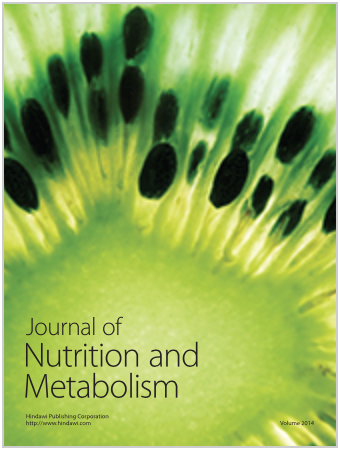
Review Article
Pomegranate juice, due to its unique bioactive compounds, could potentially alleviate complications related to SARS-CoV-2 infections, especially in patients with pre-existing chronic diseases.
Banihani SA

Review Article
The Jing Si Herbal Drink, composed of various antiviral, antioxidant and anti-inflammatory herbs, has been confirmed as potentially effective in treating COVID-19 symptoms.
Lu PH, Tseng CW, Lee JL, Lee EY, Lin YP, Lin IH, Yu MC, Lu KC, Kuo KL
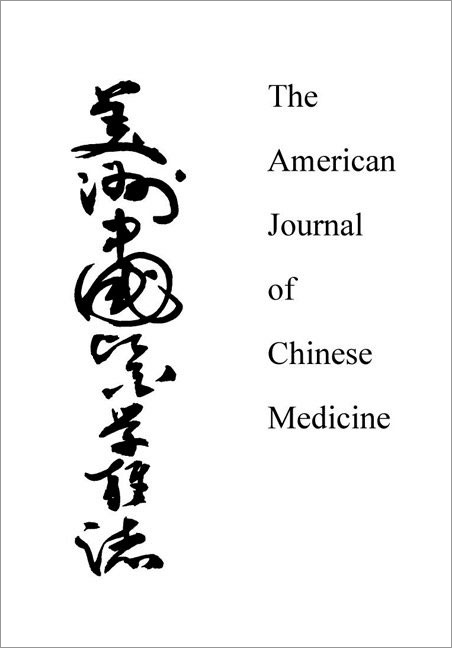
Randomised Controlled Trial
Acupuncture is a safe and effective treatment for Seasonal Allergic Rhinitis, significantly improving symptoms without needing relief medication or causing side effects.
Xue CC, English R, Zhang JJ, Da Costa C, Li CG
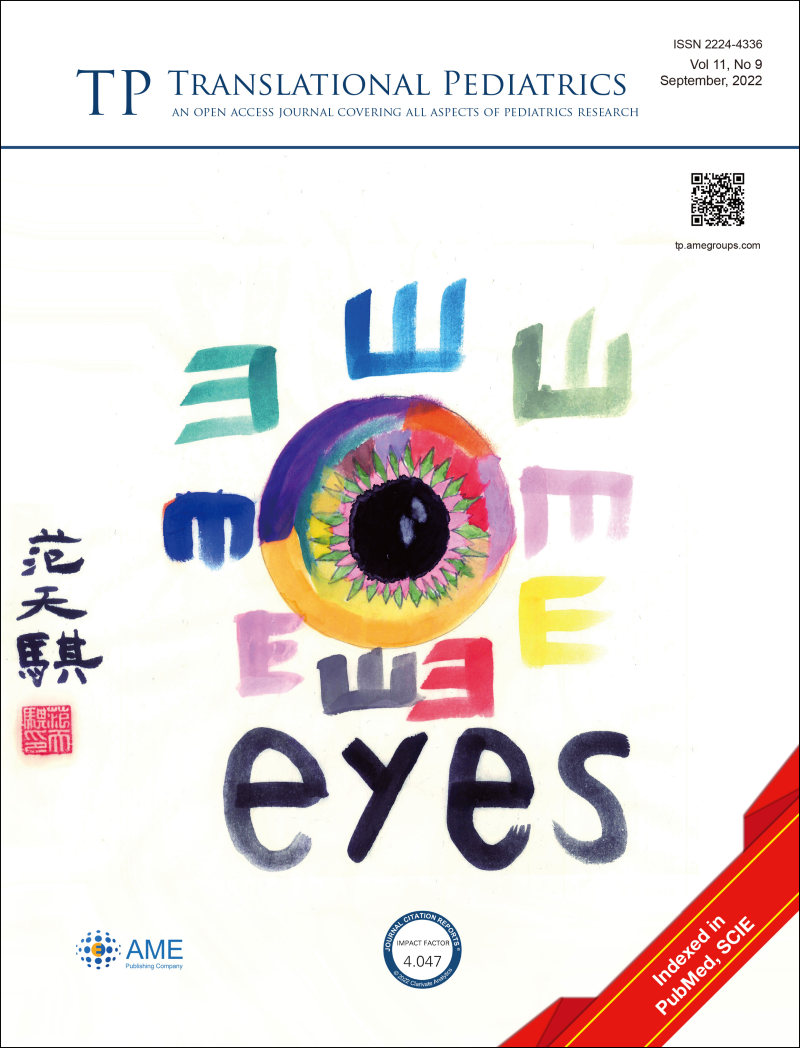
Review Article
Allergic rhinitis in children, according to traditional Chinese medicine, is interrelated with the functionality of lungs, spleen, and kidney and can be treated with combined Western and Chinese herbal medicines.
Liang J, Gu Q

Systematic Review
Green tea consumption has been found to be effective in preventing the contraction of influenza infections.
Rawangkan A, Kengkla K, Kanchanasurakit S, Duangjai A, Saokaew S
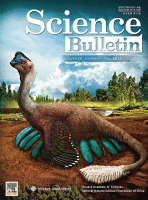
Qingfei Paidu Decoction might significantly inhibit IL-6 and TNF-α signaling pathways in regulating COVID-19-related cytokine storm.
Yifei Dai, Weijie Qiang, Yu Gui, Xue Tan, Tianli Pei, Kequan Lin, Siwei Cai, Liang Sun, Guochen Ning, Jianxun Wang, Hongyan Guo, Yimin Sun, Jing Cheng, Lan Xie, Xun Lan, Dong Wang
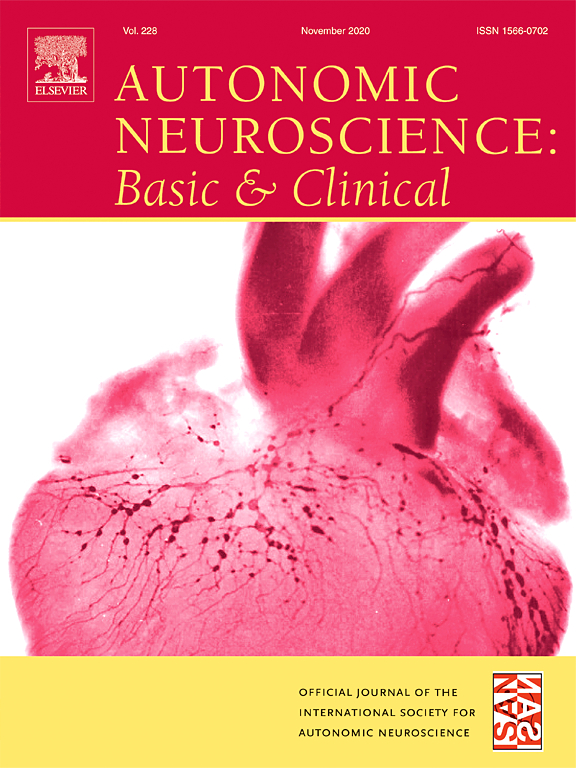
Review Article
Acupuncture, via nerve stimulation, can be a promising treatment strategy for controlling inflammation and improving organ function during sepsis by activating immune reflexes.
Pan WX, Fan AY, Chen S, Alemi SF.

Traditional Chinese medicine could reduce the all-cause mortality in COVID-19 patients, inhibit virus replication and transcription, and attenuate the cytokine storm and immune deficiency caused by the SARS-CoV-2.
Xuedong An, YueHong Zhang, Liyun Duan, De Jin, Shenghui Zhao, RongRong Zhou, Yingying Duan, Fengmei Lian, Xiaolin Tong
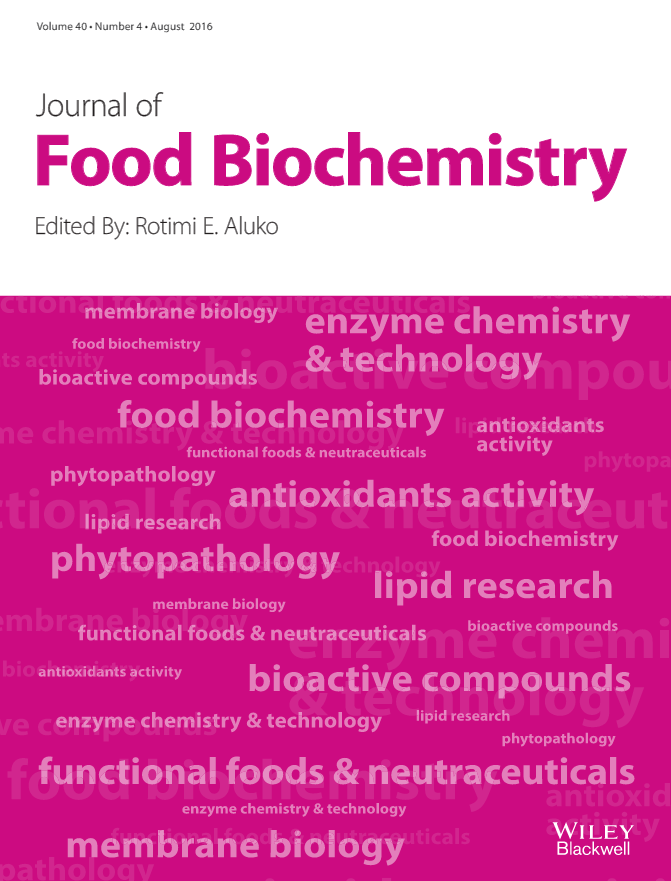
Review Article
Pomegranate demonstrates anti-proliferative, anti-oxidant, anti-inflammatory properties that can effectively control the progression of various respiratory diseases.
Shaikh SB, Bhandary YP
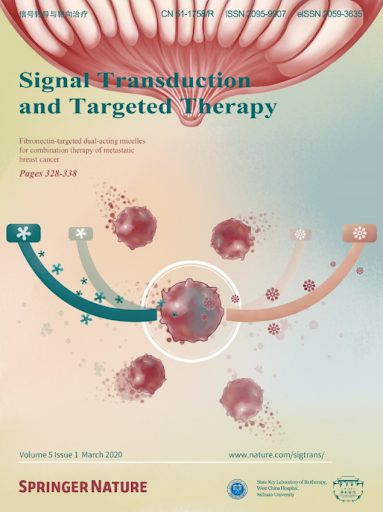
125 anti-COVID-19 traditional Chinese medicine formulae were identified with anti-inflammatory or immune-activating functions.
Qiao, L., Huang, W., Zhang, X. et al.

Among the patients hospitalized for COVID-19, the use of Qingfei Paidu Tang was associated with halving the risk of mortality, without raising the risk of acute liver injury or acute kidney injury.
Lihua Zhang, Xin Zheng, Xueke Bai, Qing Wang, Bowang Chen, Haibo Wang, Jiapeng Lu, Shuang Hu, Xiaoyan Zhang, Haibo Zhang, Jiamin Liu, Ying Shi, Zhiye Zhou, Lanxia Gan, Xi Li, Jing Li

Review Article
Bee honey and propolis could have potential beneficial effects as supporting treatments for COVID-19, enhancing immunity and inhibiting viral activity.
Ali AM, Kunugi H

Review Article
Honey's phytochemical components and bioactive compounds have potential antiviral effects, potentially making it an effective natural product against COVID-19.
Al-Hatamleh MAI, Hatmal MM, Sattar K, Ahmad S, Mustafa MZ, Bittencourt MDC, Mohamud R

Review Article
Traditional Chinese medicine has unique advantages in relieving symptoms, shortening treatment time and reducing the development of severe viral pneumonia.
Xi S, Li Y, Yue L, Gong Y, Qian L, Liang T, Ye Y
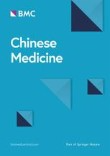
Systematic Review
Our findings revealed that all acupuncture methods are effective and safe for allergic rhinitis. Acupuncture plus conventional medicine are potentially the most effective treatment strategies for allergic rhinitis.
Yin, Z., Geng, G., Xu, G. et al.
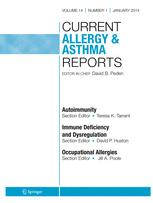
Review Article
Traditional Chinese Medicine, specifically acupuncture, demonstrates promising effects in managing allergic diseases like allergic rhinitis and asthma.
Chan HHL, Ng T
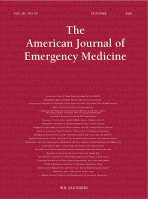
Systematic Review
Chinese medicine combined with conventional treatment significantly improved clinical efficacy, increased viral nucleic acid negative conversion rate, prominently reduced pulmonary inflammation, and improved host immune function.
Sun, C. Y., Sun, Y. L., & Li, X. M.
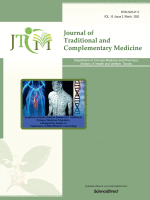
Cohort Study
Chinese herbal medicine usage in children with asthma can reduce their risk of hospitalization.
Lo PC, Lin SK, Lai JN

Meta-Analysis
Consumption of raw milk early in life appears to provide protection against asthma and allergies, regardless of whether children live on farms or in rural, non-farm areas.
Brick T, Hettinga K, Kirchner B, Pfaffl MW, Ege MJ

Animal Study
A traditional Chinese prescription, Yu Ping Feng San, significantly mitigates symptoms in cases of asthma recurrence, outperforming commonly prescribed asthma medications.
Bao K, Yuan W, Zhou Y, Chen Y, Yu X, Wang X, Jia Z, Yu X, Wang X, Yao L, Wang S, Xu Y, Zhang Y, Zheng J and Hong M
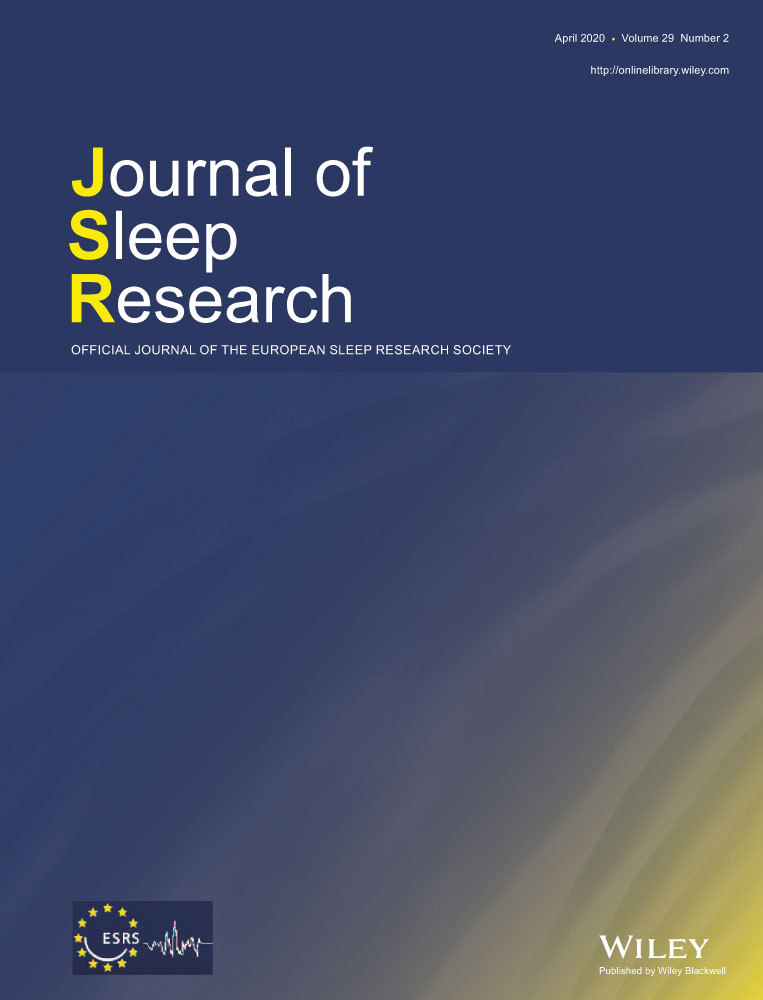
Randomised Controlled Trial
Acupuncture therapy does not impact the severity of Obstructive Sleep Apnea, blood pressure, or quality of life in hypertensive patients.
Silva MVFP, Lustosa TC, Arai VJ, Couto Patriota TLG, Lira MPF, Lins‐Filho OL, Chalegre ST, B.B.A.S. K, Secundo IV, Pedrosa RP

Review Article
Tea catechins, found in green tea, may reduce the rates of influenza infection and diminish certain cold symptoms.
Furushima D, Ide K, Yamada H
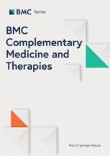
Systematic Review
Ma Huang Tang may lower the duration of fever when it is used alone or in combination with neuraminidase inhibitors and may be a well-tolerated treatment.
Yoshino, T., Arita, R., Horiba, Y. et al
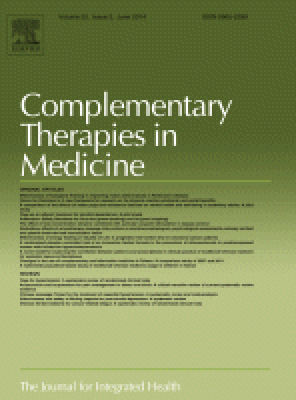
Systematic Review
Bu Zhong Yi Qi Tang treatment improves clinical symptoms, exercise capacity, lung function and quality of life for patients with stable chronic obstructive pulmonary disease.
Yuanbin Chen, Johannah Linda Shergis, Lei Wu, Xuhua Yu, Qigang Zeng, Yinji Xu, Xinfeng Guo, Anthony Lin Zhang, Charlie Changli Xue, Lin Lin

Systematic Review
Herbal medicines combined with routine pharmacotherapies improved asthma outcomes greater than pharmacotherapies alone.
Shergis JL, Wu L, Zhang AL, Guo X, Lu C, Xue CC
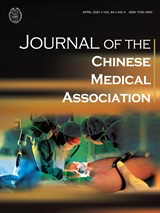
Meta-Analysis
Compared with oseltamivir, Chinese herbs might have superior potential effects on fever resolution and similar effects on viral shedding.
Li, Jiang-Honga,; Wang, Re-Qina; Guo, Wen-Jieb; Li, Juan-Shengc

Randomised Controlled Trial
Traditional Chinese acupuncture can potentially improve olfactory function in patients suffering from postviral olfactory dysfunction who don't respond well to standardized treatments.
Qi Dai, Zhihui Pang, Hongmeng Yu
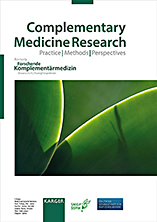
Systematic Review
Acupoint application may be a valid complementary and alternative therapy for asthma in adults.
Su L., Meng L., Chen R., Wu W., Peng B., Man L.

Randomised Controlled Trial
Four weeks of acupuncture treatment is a safe and effective option for clinical management of seasonal allergic rhinitis in the Melbourne area for patients' symptom relief and quality of life improvement.
Xue CC, Zhang AL, Zhang CS, DaCosta C, Story DF, Thien FC
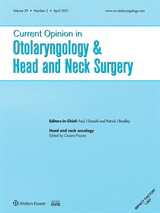
Systematic Review
There are high-quality randomized controlled trials that demonstrate efficacy and effectiveness for acupuncture in the treatment of both seasonal and perennial allergic rhinitis.
Malcolm B. Tawa, William D. Reddyb, Folashade S. Omolec, and Michael D. Seidmand

Practice Guideline
Clinicians may offer acupuncture, or refer to a clinician who can offer acupuncture, for patients with allergic rhinitis who are interested in nonpharmacologic therapy.
Seidman MD et al.

Meta-Analysis
Our meta-analysis suggests that that acupuncture could be a safe and valid treatment option for allergic rhinitis patients.
Feng S, Han M, Fan Y, Yang G, Liao Z, Liao W, Li H
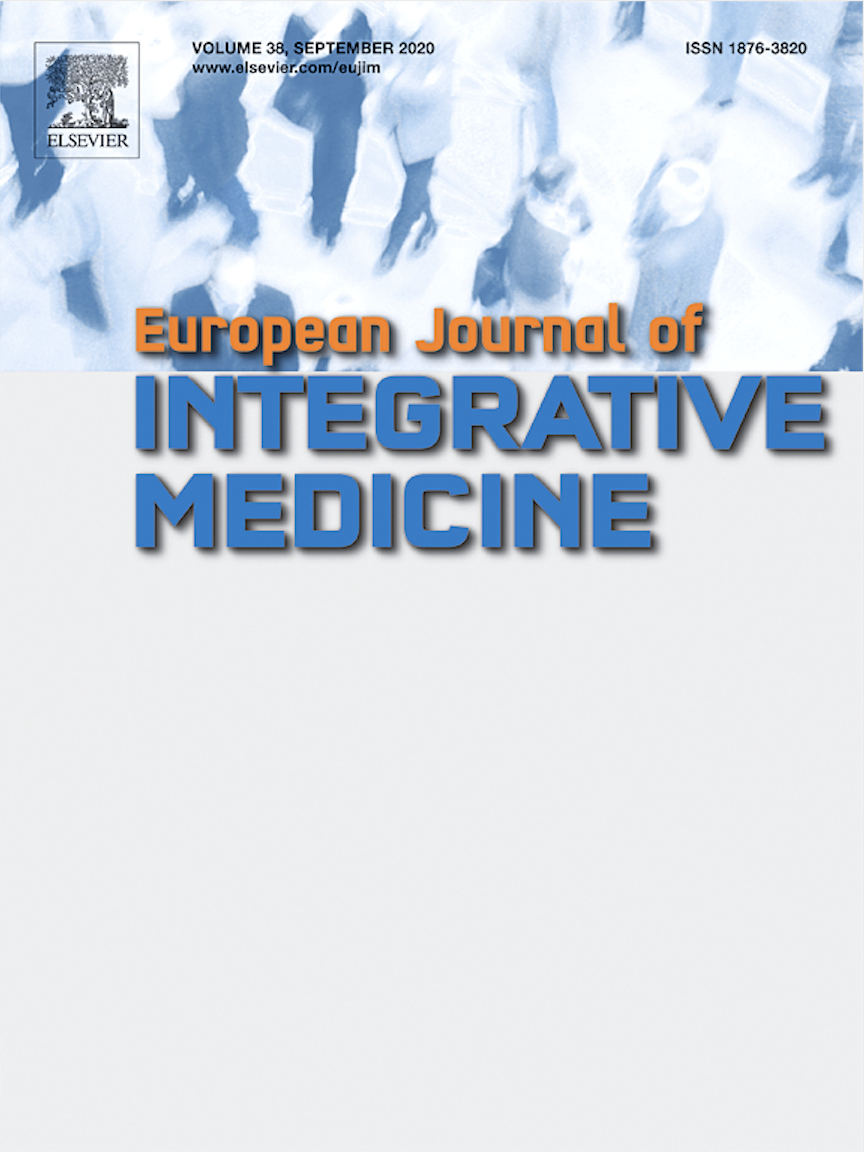
Traditional Chinese Medicine (TCM) is regularly used in treating upper respiratory tract infections, particularly for patients (more female patients in database found) with mild symptoms, using commonly preferred prescriptions, i.e Yin Qian San & Ma Xing Shi Gan Tang.
Yu JS, Ho CH, Hsu YC, Wang JJ, Hsieh CL

Systematic Review
Most Chinese medical herbs in the included studies showed similar effects to antiviral drugs in preventing or treating influenza.
Jiang L, Deng L, Wu T.
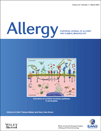
Randomised Controlled Trial
Acupuncture was found to be a more effective and safe treatment for allergic rhinitis than sham acupuncture or no treatment.
Choi SM, Park JE, Li SS, Jung H, Zi M, Kim TH, Jung S, Kim A, Shin M, Sul JU, Hong Z, Jiping Z, Lee S, Liyun H, Kang K, Baoyan L
Executive Summary
Write an executive summary in the form of a blog article on the topic of "Research into Chinese medicine treatment for Respiratory Conditions" summarising the research below and using language that can be easily understood by patients and avoiding medical jargon using a professional and caring tone of voice.
Write an executive summary in the form of a blog article on the topic of "Researched Chinese medicine treatments for Respiratory Conditions" summarising the research below in an objective and easy to understand way, and using language that can be easily understood by patients. Group the article into Chinese medicine treatments first, followed by nutrition and other treatments. Avoid using medical jargon and use a professional and caring tone of voice.
Write me a concise but easy to understand executive summary on the topic of "Chinese medicine treatments for Respiratory Conditions" based on the following research that I will give you. Your summary should be 2 paragraphs long in Australian English spelling and include references to the studies.
A Randomised Controlled Trial published in 2023 in the journal Journal of Medicinal Food found that Korean pear extracts appear to alleviate air pollution-related respiratory hypersensitivity by modulating beneficial gut microflora and suppressing pro-inflammatory cytokines. In the preclinical and randomized double-blind clinical studies, mild-asthma subjects living in Seoul, Korea were divided into two groups: one receiving a daily treatment of pear extracts for four weeks, and a placebo group. The pear extract was tested for its ability to mitigate respiratory hypersensitivity connected to air pollution. The treatment's effects were evaluated based on the toxicokinetic study of exposure biomarkers for airborne polyaromatic hydrocarbons and levels of pro-inflammatory cytokines in human subjects. In terms of results, it was found that those individuals receiving daily pear extract exhibited decreased levels of exposure biomarkers related to airborne polyaromatic hydrocarbons. Furthermore, the pear extract treatment was associated with a significant increase in populations of fiber-degrading bacteria that boost beneficial gut microflora crucial for immune defense. Additionally, the extracts significantly suppressed the production of various pro-inflammatory cytokines, as per the preclinical tests conducted on asthma-induced mice. Overall, these outcomes suggest a beneficial role of Korean pear extracts in mitigating air pollution-related respiratory hypersensitivity.
A Randomised Controlled Trial published in 2023 in the journal Frontiers in Pharmacology found that Pomegranate extract supplements can help improve clinical symptoms and lower blood cell counts associated with inflammation in patients with allergic asthma. In this study, 64 participants with mild to moderate allergic asthma were randomly divided into two groups: a control group which was given placebo capsules and an intervention group which was given pomegranate extract capsules. The intervention group was administered a dosage of 250 milligrams of pomegranate extract twice daily over a period of eight weeks. The clinical symptoms and blood cell counts of all the participants were measured before starting the intervention and post the completion of it. The results of the study indicated that the group which was given pomegranate extract exhibited considerable improvement in clinical symptoms like shortness of breath and restrictions on activity, as compared to the control group. Additionally, the participants in the intervention group displayed a substantive drop in eosinophil, basophil, and neutrophil counts. Notably, there was a statistically significant difference in the neutrophil and eosinophil levels between the two groups, which suggests that pomegranate extract supplementation might have potential therapeutic benefits for asthma patients.
A Randomised Controlled Trial published in 2022 in the journal Mediators of Inflammation found that Drinking pomegranate juice and sumac can help reduce symptoms in outpatients diagnosed with COVID-19, alongside standard treatment. In the applied methodology, two groups were randomly formed from 182 outpatients with COVID-19. The first group had a diet containing pomegranate juice and sumac, in addition to their standard treatment. The second group, the control group, stuck to the standard treatment only. The results from the study show that outpatients with COVID-19 who consumed a diet containing pomegranate juice and sumac, along with their standard treatment, experienced a significant decrease in their symptoms. Such symptoms include fever, chills, coughing, weakness, smell and taste disorders, shortness of breath, diarrhea, nausea and vomiting, and abdominal pain. This decrease in symptoms was in comparison to the outpatients with COVID-19 who underwent only the standard treatment. Overall, the consumption of pomegranate juice and sumac has shown to be beneficial in reducing COVID-19 related symptoms.
A Systematic Review published in 2022 in the journal Evidence-Based Complementary and Alternative Medicine found that HuoXiang ZhengQi (HQXXD) may be a safe and effective treatment for Chronic Cough Variant Asthma (CVA), improving clinical efficacy and airway responsiveness while reducing recurrence rates. HuoXiang ZhengQi (HQXXD) for Chronic Cough Variant Asthma (CVA) was systematically evaluated. The HQXXD group showed significantly higher total effective rates of clinical efficacy and airway responsiveness compared to the control group, while the recurrence rate was lower. Adverse reactions were not reported in HQXXD treatment, indicating its safety for CVA patients.
A Review Article published in 2022 in the journal Biomedicine & Pharmacotherapy found that Pomegranate extract and its phytochemicals can potentially inhibit severe acute respiratory syndrome coronavirus 2 (SARS-COV-2) and improve gut microbiota, preventing obesity and diabetes. The study employs the use of in silico molecular docking methodologies to demonstrate that extract from pomegranates and their phytochemicals can serve as inhibitors of severe acute respiratory syndrome coronavirus 2's spike protein and the angiotensin-converting enzyme 2 receptor contact. These findings are further reinforced by clinical trials which suggest that pomegranates can also alleviate non-alcoholic fatty liver disease, metabolic syndrome, dental infections, and symptoms of menopause. This study has also identified numerous active compounds within pomegranates such as alkaloids, anthocyanidins, tannins, flavonoids, phenolics, proanthocyanidins, sterols, terpenes, terpenoids, xanthonoids, fatty acids, organic acids, lignans, saccharides, and vitamin C. This mixture of active compounds is believed to significantly contribute to the broad array of pharmacological activities identified within the pomegranate. This includes anti-diabetic, anti-tumor, anti-inflammatory, anti-malaria, anti-fibrotic, anti-fungal, and anti-bacterial effects. The extract from this fruit improves gut microbiota which could potentially aid in the prevention of obesity and diabetes.
A Systematic Review published in 2022 in the journal Evidence-Based Complementary and Alternative Medicine found that Acupuncture, either solo or alongside conventional treatment, results in a significant improvement in symptoms and quality of life for chronic rhinosinusitis sufferers. To evaluate the effectiveness of acupuncture in treating chronic rhinosinusitis, this study utilized 10 randomized controlled clinical trials, found through searching electronic databases. Through these trials, the posttreatment severity of chronic rhinosinusitis was measured, primarily focusing on the Total Effective Rate and patient ratings on the Visual Analogue Scale. From the analysis of the trial data, it was revealed that acupuncture, when used alone or in combination with conventional treatment methods, led to significant improvements in the severity of chronic rhinosinusitis symptoms and the quality of life of patients. This was indicated by enhanced ratings on the Visual Analogue Scale and the Total Effective Rate. It was also noted that the incidence of adverse events was similar across treatment methods. Despite these promising results, the researchers found a high degree of clinical heterogeneity across the included trials, as well as generally moderate-to-low quality of evidence.
A Systematic Review published in 2022 in the journal Evidence-Based Complementary and Alternative Medicine found that The traditional Chinese medicine phlegm-resolving method combined with either CPAP or health guidance improves obstructive sleep apnea symptoms more effectively than the applied methods alone. The research was conducted by methodically searching databases such as PubMed, Embase, Cochrane Library, Wanfang, CNKI, and VIP using specific search strategies. Data analysis was done using specialized software. For this investigation, thirteen randomized controlled trials were selected which involved a total of 882 patients diagnosed with obstructive sleep apnea-hypopnea syndrome. These trials compared the efficacy of the traditional Chinese medicine (TCM) phlegm-resolving method when combined with continuous positive airway pressure (CPAP) or with health guidance. In terms of results, it was determined that both combinations of TCM phlegm-resolving method with either CPAP or health guidance significantly improved the apnea/hypopnea index, Epworth Sleepiness Scale, and lowest oxygen saturation. The effects were observed to be generally better with treatment duration greater than six weeks. During the treatment, except for one mild report of nausea, there were no significant side effects mentioned.
A Review Article published in 2022 in the journal Journal of Nutrition and Metabolism found that Pomegranate juice, due to its unique bioactive compounds, could potentially alleviate complications related to SARS-CoV-2 infections, especially in patients with pre-existing chronic diseases. The methodology employed in this research involved reviewing and discussing currently available published evidence of the beneficial effects of pomegranate juice during conditions of viral infections. The team exploited databases such as PubMed and Scopus to access relevant references. They centered their investigation around the hypothesis that the bioactive compounds in fresh pomegranate juice are advantageous in various chronic diseased conditions, thereby making the juice potentially beneficial for SARS-CoV-2 infected patients. In the discussion of results, the researchers found compelling evidence supporting the idea that pomegranate juice can be helpful in the contexts of SARS-CoV-2 infections, particularly for those patients who have a clinical history of chronic diseases like hypertension, cardiovascular disease, diabetes, and cancer. Notably, they point out that it is the unique bioactive compounds in the juice that make it beneficial for such situations.
A Review Article published in 2022 in the journal Pharmacological Research - Modern Chinese Medicine found that The Jing Si Herbal Drink, composed of various antiviral, antioxidant and anti-inflammatory herbs, has been confirmed as potentially effective in treating COVID-19 symptoms. The methodology incorporated in this study involves analyzing the efficacy of the component herbs present in Jing Si Herbal Drink (JSHD). This was done through in vivo and in vitro testing to understand their potential in treating COVID-19. JSHD comprises a combination of 5 antiviral, 7 antioxidant, 7 anti-inflammatory herbs. Furthermore, it includes 2 herbs that inhibit the overactive immune system, one herb that reduces cell apoptosis, and another with antithrombotic ability. These constituent herbs were evaluated for their impact on the pathogenesis of COVID-19. Discussion of the results showed that the ingredients in JSHD have demonstrated potential effectiveness against COVID-19. The active ingredients in the drink were effective in providing symptomatic relief for infected patients. The antiviral, antioxidant, and anti-inflammatory herbs, along with those altering immune response, inhibiting cellular apoptosis and providing antithrombotic capacity, were all found beneficial against the disease. Thus, JSHD holds promise as a useful adjuvant or supplementary treatment in handling COVID-19.
A Randomised Controlled Trial published in 2022 in the journal The American Journal of Chinese Medicine found that Acupuncture is a safe and effective treatment for Seasonal Allergic Rhinitis, significantly improving symptoms without needing relief medication or causing side effects. The study was a two-phase, single-blind, crossover clinical trial where randomly assigned subjects, split into two groups, were treated with either real or sham acupuncture. All participants received treatment thrice a week for four weeks straight before being flipped onto the other form of treatment for another four uninterrupted weeks without a washout period. The real acupuncture treatment plan was guided by Chinese Medicine Theory. The subjects' responses were measured at various stages - before, during, and after the trials. In the study, significant improvement was marked in the subjective symptom scores, both nasal and non-nasal, between the group that received the genuine acupuncture and the sham treatment. It was noteworthy, however, that no marked differences were found in the relief medication scores between the two groups. There were also no recorded side effects from either the real or sham acupuncture groups. This suggests that acupuncture proves to be a safe and effective alternative for managing Seasonal Allergic Rhinitis.
A Review Article published in 2021 in the journal Translational Pediatrics found that Allergic rhinitis in children, according to traditional Chinese medicine, is interrelated with the functionality of lungs, spleen, and kidney and can be treated with combined Western and Chinese herbal medicines. The methodology of this study was based on a review of both traditional Chinese and Western medical theories and practices. Chinese theory postulates that BiQiu, or allergic rhinitis in children, is primarily related to a congenital deficiency in vital qi, dysfunction of the lungs inhibiting nose orifices, and a deficiency of spleen and kidney leading to lung qi deficiency. The review looked into herbal monomers and compounds of Chinese herbal medicines as potential treatments for allergic rhinitis, while also considering the impact of external factors like the cold and inadequate diet. The review highlighted some of the effects and shortcomings of Chinese herbal medicines used alongside Western medicines for treating allergic rhinitis. Particularly, it focussed on how the unique perceptions of life science of the human body from both Eastern and Western cultures can be brought together for a comprehensive method of treatment. The study also outlined future trends of research to enhance this combined treatment approach.
A Systematic Review published in 2021 in the journal Molecules found that Green tea consumption has been found to be effective in preventing the contraction of influenza infections. To identify the potential benefits of green tea in influenza prevention, a methodical review and combined analysis of eight distinct research studies involving 5,048 participants was completed. The effect of green tea catechin treatment was tested against control conditions and assessed based on infection rates. Five of these studies were randomized controlled trials involving 884 participants and three were cohort studies with 2,223 participants. Subgroups such as those who gargled or took orally ingested forms of green tea were also analyzed separately. Further to this, the possibility of publication biases was evaluated using Begg's and Egger's tests. The results showed both the randomized trials and the cohort studies displayed significant preventative effects on influenza infection for those treated with green tea catechins. Notably, there was no evidence of non-uniformity within the data, reinforcing these findings. The pooled results of different consumption methods further supported these findings, showing no disparities among the subgroups. These results suggest the consumption of green tea has tangible prophylactic effects against influenza infection.
A published in 2021 in the journal Science Bulletin found that Qingfei Paidu Decoction might significantly inhibit IL-6 and TNF-α signaling pathways in regulating COVID-19-related cytokine storm. We evaluated the effects of 578 herbs and all 338 reported anti-COVID-19 TCM formulae on cytokine storm-related signaling pathways, and identified the key targets of the relevant pathways and potential active ingredients in these herbs. A total of 16 herbs was identified to have a significant inhibitory effect on the IL-6 pathway, while 37 herbs suppress the TNF-α pathway significantly. In the heatmap of gene expression induced by these herbs, more than half of the genes are down-regulated, suggesting that these herbs have a significant inhibitory effect on the expression of cytokine storm-related genes. By combining the HTS2 assay and herb scoring results, we constructed a formula-herb-gene-pathway network diagram of Qingfei Paidu Decoction. In this formula, we identified 4 herbs with an inhibitory effect on the IL-6 or TNF-α pathways, including Guizhi, which significantly inhibits the IL-6 pathway, and Shegan, Baizhu, and Zexie, which significantly inhibit the TNF-α pathway.
A Review Article published in 2021 in the journal Autonomic Neuroscience: Basic and Clinical found that Acupuncture, via nerve stimulation, can be a promising treatment strategy for controlling inflammation and improving organ function during sepsis by activating immune reflexes. The study used a neuromodulation approach, leveraging the technique of peripheral nerve stimulation through acupuncture. This was linked with known somatic-autonomous-immune reflexes with the aim to control inflammation and improve organ functions in sepsis cases. The local and systematic effects of this methodology were largely achieved through the activation of several reflexes. These included the somatic-sympathetic-splenic reflex, the somatic-sympathic-adrenal reflex, the somatic-vagal-splenic reflex, and the somatic-vagal-adrenal reflex. The activation of these particular reflexes is what sets acupuncture apart from other nerve stimulation techniques. In terms of results, the method used for immunomodulation and inflammation control showed considerable promise for sepsis treatment. The acupuncture procedure achieved regulation by activating appropriate reflexes which in turn produced a systemic effect, thereby controlling inflammation and enhancing organ function. The research findings underscore acupuncture as an effective therapy, providing significant advantages for immunomodulation in acute inflammation such as sepsis, leading to a comprehensive, evidence-based therapy recommendation.
A published in 2021 in the journal Biomedicine & Pharmacotherapy found that Traditional Chinese medicine could reduce the all-cause mortality in COVID-19 patients, inhibit virus replication and transcription, and attenuate the cytokine storm and immune deficiency caused by the SARS-CoV-2. Presently, there is good evidence that TCM can effectively alleviate the symptoms of patients with suspected and confirmed COVID-19, delay the progression from mild and moderate to severe and critical disease, and reduce severe and critical all-cause mortality. The role of TCM is related to affecting the transcription, replication, and binding of SARS-CoV-2 to the host and attenuating the cytokine storm and weak immunity in patients with COVID-19.
A Review Article published in 2021 in the journal Journal of Food Biochemistry found that Pomegranate demonstrates anti-proliferative, anti-oxidant, anti-inflammatory properties that can effectively control the progression of various respiratory diseases. The research methodology involved both in vivo and in vitro studies to examine the potential effects of pomegranate fruit, juice, extract, peel powder, and oil on a variety of respiratory disorders such as asthma, lung cancer, and chronic obstructive pulmonary disease. The focus was to understand the properties of pomegranates that led to its anti-proliferative, anti-oxidant, anti-microbial, anti-inflammatory, anti-cancer, and anti-tumorigenic effects, and how these qualities could potentially attenuate these diseases through modulation of various signaling pathways. The discussion of results revealed that pomegranate was effective in controlling the progression of diverse respiratory diseases, suggesting it could be a key therapeutic target. These results not only demonstrated the potential medical benefits of pomegranate against lung-based diseases but also highlighted its possible role in influencing the lung fibrinolytic system. The findings from both preclinical and clinical studies underscored the influence of pomegranate in tackling lung diseases.
A published in 2021 in the journal Signal Transduction and Targeted Therapy found that 125 anti-COVID-19 traditional Chinese medicine formulae were identified with anti-inflammatory or immune-activating functions. Our research suggested a good approach for evaluating the efficacy of anti-COVID-19 TCM formulae based on their immunoregulatory effects on a macrophage model. The state council of the People’s Republic of China recommended three patented medicines and three TCM formulae for the treatment of COVID-19 which have shown good anti-COVID-19 effects in clinical practice. Our system indicated that five of six formulae and medicines mentioned above possessed a negative normalized enrichment score (NES), including Qingfei Paidu Decoction (ranking 1/98), Lianhua Qingwen Capsule (ranking 6/98), Xuanfei Baidu Formula (ranking 14/98), Huashi Baidu Formula (ranking 20/98), and Jinhua Qinggan Granule (ranking 45/98). The remaining one, Xuebijing Injection (ranking 26/26), had a positive NES.
A published in 2021 in the journal Phytomedicine found that Among the patients hospitalized for COVID-19, the use of Qingfei Paidu Tang was associated with halving the risk of mortality, without raising the risk of acute liver injury or acute kidney injury. Of the 8939 patients included, 28.7% received QPT. The COVID-19 related mortality was 1.2% among the patients receiving QPT and 4.8% among those not receiving QPT. After adjustment for patient characteristics and concomitant treatments, QPT use was associated with a relative reduction of 50% in-hospital COVID-19 related mortality. This association was consistent across subgroups by sex and age. Meanwhile, the incidences of acute liver injury and acute kidney injury were comparable between patients receiving QPT and those not receiving QPT. The major study limitations included that the study was an observational study based on real-world data rather than a randomized control trial, and the quality of data could be affected by the accuracy and completeness of medical records. In this analysis based on a national registry of hospitalized patients with COVID-19, we first demonstrated that QPT use was associated with halving the risk of in-hospital mortality, without any significant increase in the risk of adverse effects, such as acute liver injury or acute kidney injury. Our findings have provided new evidence and insights regarding the treatment of COVID-19.
A Review Article published in 2021 in the journal Molecules found that Bee honey and propolis could have potential beneficial effects as supporting treatments for COVID-19, enhancing immunity and inhibiting viral activity. The study's methodology involved a comprehensive review of the literature on the potential anti-COVID-19 effects of bee honey and propolis, products known for their strong antimicrobial and antioxidant abilities. The researchers conducted molecular simulations to see how various flavonoids found in these products might inhibit essential viral processes. Additionally, they compared the effectiveness of propolis extracts delivered by nanocarriers to ethanolic extracts, and they examined the effects of a combination of honey and propolis on hospitalized COVID-19 patients. The findings from the review and simulations suggested that certain flavonoids in honey and propolis may inhibit the fusion of the virus spike with host cells, interactions that cause a cytokine storm, and viral replication. Propolis ethanolic extract, rutin, and propolis liposomes displayed inhibitory action against non-structural proteins of the virus in vitro while naringin inhibited viral infection in specific cells. When delivered via nanocarriers, propolis extracts showed enhanced antiviral effects against the virus compared to ethanolic extracts. Observations of hospitalized patients suggested that those treated with green Brazilian propolis or a honey-propolis combination experienced quicker viral clearance, symptom recovery, and hospital discharge, along with lower mortality rates.
A Review Article published in 2020 in the journal Molecules found that Honey's phytochemical components and bioactive compounds have potential antiviral effects, potentially making it an effective natural product against COVID-19. The methodology of this research utilizes a comprehensive review and analysis of existing literature regarding the antiviral effects and phytochemical components of honey. Previous studies have indicated that certain bioactive compounds present in honey, such as methylglyoxal, chrysin, caffeic acid, galangin, hesperidin, levan, and ascorbic acid, may exhibit antiviral effects or stimulate the body's antiviral immune responses. Through thorough examination of past works, the researchers isolated and focused on these compounds, exploring their potential utility in the context of COVID-19, a novel coronavirus that currently lacks established preventative or treatment measures. The results of the analysis pointed towards the efficacy of honey's bioactive compounds, which were found to potentially display both direct antiviral effects and the promotion of antiviral immune responses. However, the precise mechanisms by which these compounds exert their antiviral activity, particularly against SARS-CoV-2, remain largely unclear. Despite these ambiguities, the research established honey as a fruitful field of study for potential therapeutic material against the novel coronavirus disease.
A Review Article published in 2020 in the journal Frontiers in Pharmacology found that Traditional Chinese medicine has unique advantages in relieving symptoms, shortening treatment time and reducing the development of severe viral pneumonia. In the treatment of viral pneumonia through syndrome differentiation, traditional Chinese medicine (TCM) plays a variety of roles in inhibiting the proliferation, replication, adsorption and membrane penetration of the virus, promoting the expression of interferon in vivo, inhibiting inflammatory reaction, enhancing immunity, etc., which is one of the theoretical bases for the clinical application of TCM in the prevention and treatment of viral pneumonia. Traditional Chinese herbal medicine and compound medicinals are characterized by multi-component, multi-pathway and multi-pathway complex networks. Therefore, drug resistance is relatively rare in the clinical practice of TCM. Moreover, in the process of diagnosis and treatment of TCM, treatment based on differentiation of symptoms and signs, especially treatment based on classification of symptoms and signs, can best reflect the overall concept of TCM. TCM has precise therapeutic activity and less adverse reactions. Accumulating evidence has demonstrated the competent therapeutic effects of TCM against viral pneumonia with a prominent safety profile.
A Systematic Review published in 2020 in the journal Chinese Medicine found that Our findings revealed that all acupuncture methods are effective and safe for allergic rhinitis. Acupuncture plus conventional medicine are potentially the most effective treatment strategies for allergic rhinitis. Our findings revealed that all acupuncture methods are effective and safe for allergic rhinitis. Moreover, either moxibustion or manual acupuncture plus conventional medicine are potentially the most effective treatment strategies for allergic rhinitis. Based on these findings, it is evident that acupuncture therapy is not inferior to pharmacologic therapy. Therefore, for allergic rhinitis patients who are either unresponsive to conventional medicine or are intolerant to adverse events, acupuncture therapy should be administered. However, the quality of these included trials was mainly ranked as moderate quality, we recommend additional well-designed RCTs with larger sample sizes to validate these findings.
A Review Article published in 2020 in the journal Current Allergy and Asthma Reports found that Traditional Chinese Medicine, specifically acupuncture, demonstrates promising effects in managing allergic diseases like allergic rhinitis and asthma. The methodology for this paper involved an extensive review of recent publications, predominantly those presenting randomized controlled trials, that assess the use of Traditional Chinese Medicine (TCM) in treating allergies. The focus was on the two most popular treatment modalities in TCM, Chinese herbal medicine and acupuncture. Publications detailing the mechanisms by which TCM impacts allergic diseases, as well as literature in Chinese, were also examined. The analysis of the results showed an increasing trend of using TCM, specifically Chinese herbal medicine, to manage allergic diseases. However, literature evidence was found lacking to conclusively establish its effectiveness. On the other hand, acupuncture showed more definitive evidence of its utility, especially when treating allergic rhinitis and asthma, either as a standalone intervention or alongside conventional western medication. Its effectiveness in treating atopic eczema and urticaria was less clear, nonetheless, it's recommended to be incorporated into the treatment of specific allergic diseases on a personalized basis.
A Systematic Review published in 2020 in the journal The American Journal of Emergency Medicine found that Chinese medicine combined with conventional treatment significantly improved clinical efficacy, increased viral nucleic acid negative conversion rate, prominently reduced pulmonary inflammation, and improved host immune function. A total of 7 valid studies involving 681 patients were included. The meta-analysis exhibited in comparison to conventional treatment, Chinese medicine combined with conventional treatment significantly improved clinical efficacy, and significantly increased viral nucleic acid negative conversion rate. Chinese medicine also prominently reduced pulmonary inflammation, and improved host immune function. Meanwhile, Chinese medicine did not increase the incidence of adverse reactions. According to the allocated data, Chinese medicine has demonstrated clinical efficacy and safety on COVID-19 pneumonia, which need to be confirmed by high quality, multiple-center, large sample randomized controlled trials.
A Cohort Study published in 2020 in the journal Journal of Traditional and Complementary Medicine found that Chinese herbal medicine usage in children with asthma can reduce their risk of hospitalization. The study used data from one million individuals randomly selected from the National Health Insurance Research Database's Registry of Beneficiaries. Children under 18 years old diagnosed with asthma were followed from the year 2000 to 2012. These patients were classified into two groups: the Chinese Herbal Medicine (CHM) group and the non-CHM group. The Kaplan-Meier survival curve and Cox proportional hazard regression model were utilized to estimate the adjusted hazard ratio of the two groups and to determine the correlation between the number of cumulative days the CHM was used and consequent hospitalizations due to asthma. After adjusting for variables such as gender, age, comorbidities, and the total numbers of asthma medications taken, it was found that users of CHM had a reduced risk of hospitalization due to asthma compared to non-CHM users. Children older than six years who used CHM therapy for more than 180 days demonstrated a significant reduction in the risk of subsequent hospitalization for asthma.
A Meta-Analysis published in 2020 in the journal The Journal of Allergy and Clinical Immunology: In Practice found that Consumption of raw milk early in life appears to provide protection against asthma and allergies, regardless of whether children live on farms or in rural, non-farm areas. Whoever did the research carried out a comprehensive literature review, identifying twelve relevant publications from eight unique studies. Their approach involved a meta-analysis to substantiate the protective effect of raw milk consumption in early life, particularly for ages ranging from less than one year old to five years old. They further analyzed the impacts of raw milk on not only asthma but also other ailments such as wheezing, hay fever, allergic rhinitis, and atopic sensitization. Moreover, evidence was provided about the beneficial effects of raw milk for children, both living on the farms and those in rural sectors but not on farms. Moreover, in the interpretation of results, it was clearly evident that the consumption of raw milk had an independent effect, separate from other farm exposures. In essence, even children not residing on farms theoretically can still gain from the benefits of raw milk consumption. However, they express a strong sense of caution, advocating against the consumption of raw milk due to the possibility of life-threatening infections. Furthermore, the distinction between raw farm milk and industrially processed milk was underlined to highlight differences in cellular components, fat fraction, and heating degrees. Preliminary findings link these characteristics and attributes of raw milk to heat-labile molecules and components found in its fat fraction.
A Animal Study published in 2020 in the journal Frontiers in Pharmacology found that A traditional Chinese prescription, Yu Ping Feng San, significantly mitigates symptoms in cases of asthma recurrence, outperforming commonly prescribed asthma medications. In the research, an optimized mouse model was employed, which was induced with asthma recurrence by house dust mites. This model exhibited classic asthma responses, such as augmented airways hyperresponsiveness, increased serum IgE, and elevated pulmonary type 2 cytokines levels among others. Then, YPFS was applied during the remission phase preceding a second symptomatic phase. The researchers observed significant improvements in the asthmatic pathological features, and compared its effectiveness to three different types of standard clinical medications: dexamethasone, montelukast, and salbutamol, which were given during the recurrence phase. The research results revealed that the application of YPFS during the remission phase remarkably alleviated the asthma relapses induced by house dust mites. This was achieved by restoring the deficiency of desmoglein 1 (a type of protein) and decreasing thymic stromal lymphopoietin (a type of cytokine) overexpression, which are believed to be key contributors to chronic asthma relapse. Not only was the fundamental role of desmoglein 1 in asthma pathogenesis demonstrated, it also gave rise to a new and potent strategy for chronic asthma treatment.
A Randomised Controlled Trial published in 2019 in the journal Journal of Sleep Research found that Acupuncture therapy does not impact the severity of Obstructive Sleep Apnea, blood pressure, or quality of life in hypertensive patients. The study examined the effects of acupuncture on blood pressure and Obstructive Sleep Apnea severity in hypertensive patients. These patients, all suffering from mild to moderate Obstructive Sleep Apnea, were randomly divided into two groups, one of which received acupuncture treatment while the other received sham-acupuncture treatment, essentially a placebo. Each patient's condition was assessed before and after ten acupuncture sessions, relying on measures such as polysomnography, around-the-clock blood pressure monitoring, and a life quality survey. A total of 44 patients completed the study, the group covering both genders, with an average age of 57 years, and a diverse range of body mass indices and apnea-hypopnea indices. It's important to note that there were no distinguishable differences observed in the apnea-hypopnea index, daytime or nighttime blood pressure, or life quality between the group that received genuine acupuncture treatment and the group that received the placebo treatment.
A Review Article published in 2018 in the journal Molecules found that Tea catechins, found in green tea, may reduce the rates of influenza infection and diminish certain cold symptoms. The research methodology started with interpreting several experimental studies which reported that tea catechins can inhibit influenza viral adsorption and suppress replication and neuraminidase activity. These catechins were also found effective against some common cold viruses and helped to enhance immunity against such viral infections. Additionally, epidemiological studies conducted since the late 1990s were examined which suggested that regular consumption of green tea may decrease influenza infection rates and some cold symptoms, and gargling with tea catechin could potentially protect against the development of influenza infection. For the discussion of results, the studies collectively showed that tea catechins have potential antiviral activity against influenza and some cold viruses. Although clinical evidence supporting these effects remained unconclusive, the review showed promising trends. The consumption of green tea and gargling with tea catechins could lead to potentially decreased rates of influenza infection and lessened cold symptoms according to the analyzed epidemiological studies.
A Systematic Review published in 2018 in the journal BMC Complementary Medicine and Therapies found that Ma Huang Tang may lower the duration of fever when it is used alone or in combination with neuraminidase inhibitors and may be a well-tolerated treatment. Twelve relevant studies were identified, including two randomised controlled trials (RCTs, N = 60) and ten non-randomised studies (NRSs, N = 1110). We found that maoto plus NAIs was superior to NAIs alone in terms of the duration of fever in one RCT and four NRSs. The duration of symptoms or virus isolation did not differ between maoto and NAIs. No severe side effects or adverse reactions were reported related to maoto or NAIs. Although we could not reach a definitive conclusion because of the small sample sizes and high risk of bias in the analysed studies, maoto may lower the duration of fever when it is used alone or in combination with NAIs and may be a well-tolerated treatment. More RCTs are needed to determine the efficacy and safety of maoto.
A Systematic Review published in 2016 in the journal Complementary Therapies in Medicine found that Bu Zhong Yi Qi Tang treatment improves clinical symptoms, exercise capacity, lung function and quality of life for patients with stable chronic obstructive pulmonary disease. Methodology: The researchers performed a systematic review of three English databases (PubMed, EMBASE and CENTRAL) and four Chinese databases (CBM, CNKI, CQVIP and WFMO), with selection ending on 30th June 2016. Participants in the reviewed studies were diagnosed with chronic obstructive pulmonary disease according to recognized guidelines and were in a stable stage of the disease. Included were randomized controlled trials of oral Buzhong Yiqi Tang, whether alone or combined with conventional treatment, compared to conventional treatment alone or with a placebo. Various outcome measures were used to evaluate the efficacy of the treatment. Discussion of Results: Sixteen studies involving 1400 participants were included. In general, patients treated with Buzhong Yiqi Tang alone or in combination with conventional treatments showed significant improvement in their condition. This improvement was noted in areas such as clinical symptoms, exercise capacity, lung function, and quality of life compared to those on conventional treatment alone or with a placebo. The treatment also reduced the number of acute exacerbations of the disease. There were very few reported adverse events, inferring a good safety profile for this treatment regimen.
A Systematic Review published in 2016 in the journal Journal of Asthma found that Herbal medicines combined with routine pharmacotherapies improved asthma outcomes greater than pharmacotherapies alone. Twenty-nine (29) studies involving 3,001 participants were included. Herbal interventions used multi-ingredients such as licorice root, crow-dipper, astragali, and angelica. Compared with routine pharmacotherapies alone, herbal medicines as add-on therapy improved lung function; asthma control; reduced salbutamol usage; and reduced acute asthma exacerbations over one year. Compared with placebo plus pharmacotherapies herbal medicines as add-on therapy improved lung function. Other outcomes were not reported in these placebo studies. Included studies were low to moderate quality. Adverse events were rare.
A Meta-Analysis published in 2016 in the journal Journal of the Chinese Medical Association found that Compared with oseltamivir, Chinese herbs might have superior potential effects on fever resolution and similar effects on viral shedding. In this review, several Chinese herbal medicines demonstrated a potentially positive effect on the influenza A (H1N1) strain, especially on its time to defervescence, as in the studies analyzed, the mean time to defervescence in the TCM treatment group was less than that noted in the control group. Furthermore, the duration of influenza A (H1N1) shedding in the integrated Chinese and Western medicine subgroup was less than that noted in the control group, although existing evidence indicated that the difference in duration of viral shedding and effective rate between the two groups was statistically similar. The applicability of the included studies was limited, however, because their inclusion criteria, interventions, durations, and outcome measures were different. Consequently, more well-designed trials are required.
A Randomised Controlled Trial published in 2016 in the journal Evidence-Based Complementary and Alternative Medicine found that Traditional Chinese acupuncture can potentially improve olfactory function in patients suffering from postviral olfactory dysfunction who don't respond well to standardized treatments. The study utilised a sample of 50 patients with postviral olfactory dysfunction, who found little to no relief with standardized treatments. These participants were split into two equal groups: one group was subjected to traditional Chinese acupuncture, while the other group served as an observation or control group, who received no new intervention. The researchers then applied subjective olfactory tests using the University of Pennsylvania Smell Identification Test to measure the impact of acupuncture treatment on the participants' sense of smell. The results indicated that 11 out of 25 patients who had undergone acupuncture therapy showed improved olfactory function compared to only four from the observation group. It was observed that there wasn't a significant difference in recovery rates based on factors such as age, gender, or duration of disease between both groups. However, findings indicated that patients whose sense of smell was weak (hyposmic) responded to acupuncture therapy better than those who had completely lost it (anosmic).
A Systematic Review published in 2016 in the journal Complementary Medicine Research found that Acupoint application may be a valid complementary and alternative therapy for asthma in adults. It contributes especially to improving pulmonary function and reducing the levels of interleukin and immunoglobulin E. However, more studies with longer follow-ups are warranted to confirm the current findings.
A Randomised Controlled Trial published in 2015 in the journal Annals of Allergy, Asthma & Immunology found that Four weeks of acupuncture treatment is a safe and effective option for clinical management of seasonal allergic rhinitis in the Melbourne area for patients' symptom relief and quality of life improvement. A total of 175 participants were included in this trial. RA was significantly better than SA for decreasing SAR symptom severity (sneezing, mean difference −0.28, 95% confidence interval −0.51 to −0.05; itchiness of ears and palate, mean difference −0.40, 95% confidence interval −0.69 to −0.11) at the end of treatment and improving participants' QoL at the end of the treatment and follow-up phases. Furthermore, the acupuncture treatment was safe and well tolerated.
A Systematic Review published in 2015 in the journal Current Opinion in Otolaryngology & Head and Neck Surgery found that There are high-quality randomized controlled trials that demonstrate efficacy and effectiveness for acupuncture in the treatment of both seasonal and perennial allergic rhinitis. Our review of the medical literature from January 2013 through December 2014 revealed that there is research demonstrating efficacy and effectiveness for acupuncture in the treatment of allergic rhinitis, as well as improvement of quality of life and quality-adjusted life-years.
A Practice Guideline published in 2015 in the journal Otolaryngology-Head and Neck Surgery found that Clinicians may offer acupuncture, or refer to a clinician who can offer acupuncture, for patients with allergic rhinitis who are interested in nonpharmacologic therapy. The primary purpose of this guideline is to address quality improvement opportunities for all clinicians, in any setting, who are likely to manage patients with allergic rhinitis, as well as to optimize patient care, promote effective diagnosis and therapy, and reduce harmful or unnecessary variations in care. The guideline is intended to be applicable for both pediatric and adult patients with allergic rhinitis. Children under the age of 2 years were excluded in this clinical practice guideline because rhinitis in this population may be different than in older patients and is not informed by the same evidence base.
A Meta-Analysis published in 2015 in the journal American Journal of Rhinology & Allergy found that Our meta-analysis suggests that that acupuncture could be a safe and valid treatment option for allergic rhinitis patients. Because acupuncture may modulate the immune system, it has been proposed as a useful treatment for patients with allergic rhinitis (AR). Here, we assessed the evidence for the clinical efficacy of acupuncture for the management of AR patients by performing a systematic review and meta-analysis of the published literatures. Thirteen full papers that met our inclusion criteria were included, and a total of 2365 participants, including 1126 as treatment group and 1239 as control group, were enrolled. Compared with control group, acupuncture treatment group exerted a significant reduction in nasal symptom scores (weighted mean difference [WMD]: -4.42, 95% confidence interval [CI]: -8.42 to -0.43, p = 0.03), medication scores (WMD: 1.39, 95% CI: -2.18 to -0.61, p = 0005), and serum IgE (WMD: -75.00, 95% CI: -91.17 to -58.83, p < 0.00001). Data relating to Rhinitis Quality of Life Questionnaire (RQLQ) and 36-Item Short-Form (SF-36) component score in included studies were analyzed, which ultimately point to the efficacy of acupuncture treatment in improving quality of life in AR patients. No fatal events were reported in any of the included studies, and no serious systemic reaction, which needed treatment in the hospital, was related to the acupuncture treatment.
A published in 2014 in the journal European Journal of Integrative Medicine found that Traditional Chinese Medicine (TCM) is regularly used in treating upper respiratory tract infections, particularly for patients (more female patients in database found) with mild symptoms, using commonly preferred prescriptions, i.e Yin Qian San & Ma Xing Shi Gan Tang. In this study, data from the National Health Insurance Research Database was analyzed with particular attention to the treatments used for upper respiratory tract infections (URTIs). The International Classification of Diseases, Ninth Revision, Clinical Modification diagnoses codes for Taiwan in 2009, were used to identify these treatments. Techniques of data mining and association rules were deployed to examine co-prescriptions of TCM for patients with URTIs. Discussion of the results shows that out of a sample of 472,005 patients who sought treatment for URTIs, approximately 10 percent were treated with TCM and among these, over three-fifths were female. A majority - 79 percent - presented with an acute common cold. The study also noted that certain prescriptions, namely Yin-Qiao-San and Ma-Xing-Gan-Shi-Tang, were most commonly combined for patients with URTIs. The insight showed that patients were more likely to request TCM treatment if their symptoms were mild and they were women. Chinese medicine doctors treating URTIs generally adhered to TCM theory.
A Systematic Review published in 2013 in the journal Cochrane Database of Systematic Reviews found that Most Chinese medical herbs in the included studies showed similar effects to antiviral drugs in preventing or treating influenza. This updated review assessed the therapeutic effects and safety of Chinese medicinal herbs as an alternative and adjunctive therapy to other commonly used drugs for influenza. Eighteen studies involving 2521 participants were included in the review. 'Ganmao' capsules were found to be more effective than amantadine in decreasing influenza symptoms and aiding recovery in one study (in which adverse reactions were mentioned in the amantadine group although no data were reported). There were no significant differences between 'E Shu You' and ribavirin in treating influenza, nor in the occurrence of adverse reactions. The remaining 17 Chinese herbal trials showed a similar effect to antiviral drugs in preventing or treating influenza. However, since these included studies were of poor quality, the evidence does not support or reject the use of any Chinese herbal preparations for influenza. High‐quality trials are required.
A Randomised Controlled Trial published in 2012 in the journal Allergy found that Acupuncture was found to be a more effective and safe treatment for allergic rhinitis than sham acupuncture or no treatment. Methodology: The study was a multicenter, parallel-controlled experiment. Three groups of randomized participants either received active acupuncture, sham acupuncture (minimal acupuncture at nonacupuncture points), or were placed on a waitlist (no acupuncture treatment). The treatments were given three times a week over a four-week period. Discussion of Results: The active acupuncture group showed a marked reduction in allergic rhinitis symptoms compared to the other two groups. Despite this, both acupuncture types still showed significant improvements in symptoms when compared to their initial condition, confirming the efficacy of acupuncture in treating allergic rhinitis.
Moderation Tools
Topic
Sign In
Users not signed in are limited to viewing the 5 most recent items of content.
